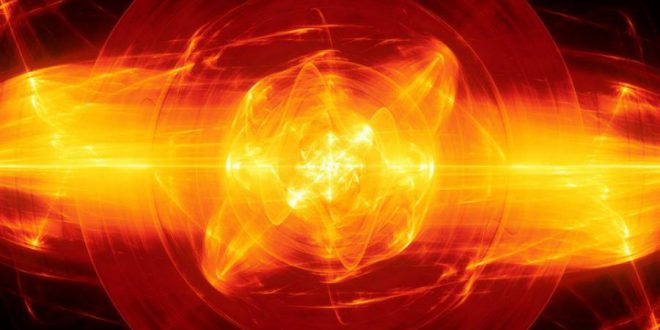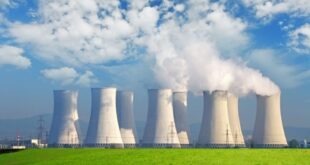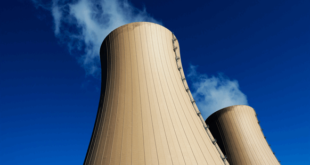In order to keep globally rising temperatures from increasing more than 1.5 degrees Celsius this century. the international community will have to cut carbon emissions by 45 percent by 2030 and down to zero by the middle of the century. Meanwhile emissions continue to increase every year. and the increase is accelerating. rising by 1.6 percent in 2017 and about 2.7 percent in 2018 to reach an all-time high. Making matters even more dire. global energy demand is projected to grow by approximately 27 percent by 2040. or 3.743 million tons oil equivalent (mtoe). What if there was one energy solution that could solve all of these pressing problems?
While it sounds fantastical. there is a comprehensive solution. And it’s right around the corner.
One of the most powerful forms of power we use today is nuclear energy. While modern nuclear is extremely efficient and creates zero carbon emissions. it has a lot of drawbacks. and they’re big ones: potential nuclear meltdowns and radioactive waste that remains hazardous for thousands of years (costing taxpayers a bundle in the process). But there is a better way. Our current nuclear reactors are all powered using nuclear fission. the process of splitting atoms to generate energy. For years. scientists have wondered how we can harness nuclear fusion. the process that powers the sun by fusing atoms together. for use on earth. Fusion is ultra-powerful. several times more potent than fission. and generates zero nuclear waste. since its fuel is not uranium or plutonium. but hydrogen.
“Achieving controlled fusion reactions that net more power than they take to generate. and at commercial scale. is seen as a potential answer to climate change.“ writes Nathanial Gronewold for Scientific American. “Fusion energy would eliminate the need for fossil fuels and solve the intermittency and reliability concerns inherent with renewable energy sources. The energy would be generated without the dangerous amounts of radiation that raises concerns about fission nuclear energy.“
The dream of nuclear fusion has long been out-of-reach. but now. with companies like the Jeff Bezos-backed General Fusion and a huge pool of fusion startups heating up the competition. fusion is quickly becoming a reality. Just this week. the `world`s largest nuclear fusion experiment` has made a major breakthrough.
Officials from the International Thermonuclear Experimental Reactor (ITER). a multinational project based in Southern France. have announced that they are now just 6.5 years away from “First Plasma.“ in a historic milestone. ITER’s project. supported by a consortium of 35 nations. is now 65 percent complete according to this week’s press release. “The section recently installed—the cryostat base and lower cylinder—paves the way for the installation of the tokamak. the technology design chosen to house the powerful magnetic field that will encase the ultra-hot plasma fusion core.“ reports Scientific American.
The project is the world’s very first commercial-scale fusion reactor project. and all eyes are on ITER’s tokamak to set the bar. as well as the timeline. for the commercialized nuclear fusion race. While the project is scheduled to launch at the end of 2025. it will take another decade (at least) to bring the facility to full power. “The date for First Plasma is set. we will push the button in December 2025.“ spokeswoman Sabina Griffith told SA. “It will take another 10 years until we reach full deuterium-tritium operations.“
Nuclear fusion is so difficult to achieve because of the extreme conditions–like those in the core of the sun– needed to be reproduced here on Earth. As explained by the United States Department of Energy. “fusion reactions are being studied by scientists. but are difficult to sustain for long periods of time because of the tremendous amount of pressure and temperature needed to join the nuclei together.“
While nuclear fusion holds an incredible amount of promise for solving some of the modern world’s toughest issues. the clock is ticking. and many experts say that even with fusion right around the corner. time is not on our side. While it is hopeful that ITER’s tokamak will be up and running by 2025 and fully operational by around 2035. that could be too late. Climate experts are now saying that the 12-year deadline the Intergovernmental Panel on Climate Change gave the world to turn climate change around may need to be shortened–to 18 months. Potsdam Climate Institute’s Hans Joachim Schellnhuber puts it simply: `The climate math is brutally clear: While the world can`t be healed within the next few years. it may be fatally wounded by negligence until 2020.`
 Iran Energy News Oil, Gas, Petrochemical and Energy Field Specialized Channel
Iran Energy News Oil, Gas, Petrochemical and Energy Field Specialized Channel




